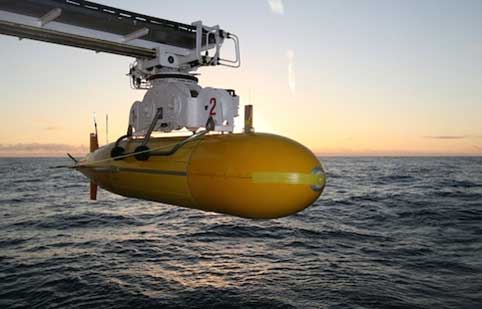
For the past month or so the loss of the Malaysian Airlines flight, MH370, has dominated the headlines on every news channel around the world. Where is it, how did it get there and why is it taking so long to establish it’s whereabouts are the unanswered questions.
Helping with the search has been a state of the art unmanned submarine which has been probing the bed of the Southern Indian Ocean. Armed with some of the latest underwater imaging and navigation systems, experts believe the Torpedo shaped vessel represents the best chance of finding the missing plane.
Whether or not the vessel is successful remains to be seen. However, whatever the outcome, the autonomous underwater vehicle (AUV) is not only the talk of the town, but is fast becoming indispensable for those with a stake in the maritime environment.
What is an AUV?
An AUV is a robot which travels underwater without requiring input from an operator. AUVs constitute part of a larger group of undersea systems known as unmanned underwater vehicles. In military applications AUVs are more often referred to simply as unmanned undersea vehicles (UUVs).
Five facts about AUVs
- The first AUV was developed at at the University of Washington in 1957.
- The “Special Purpose Underwater Research Vehicle”, or SPURV was used to study diffusion, acoustic transmission, and submarine wakes.
- Other early AUVs were developed at the Massachusetts Institute of Technology in the 1970s.
- One of these is on display in the Hart Nautical Gallery in MIT.
- AUVs were also developed in the Soviet Union, at the same time, although this was not commonly known until much later.
AUVs are widely used by the oceanographic research community and the defence sector, where their ability to operate for long periods, deep beneath the surface, makes them ideal for a range of applications.
Now, a combination of significant improvements in capability, coupled with our insatiable demand for energy, is driving a growing use of the technology in the offshore energy industry.
The trend was one of the key talking points at London’s recent Oceanology International conference, where manufacturers, survey companies and energy firms all pointed to the growing use of AUVs for a range of vitally important subsea tasks.
Click here to read the whole article from The Engineer
What’s your view on the increased use of AUVs? Share your thoughts in the comments box below.
This site uses Akismet to reduce spam. Learn how your comment data is processed.


 Mail:
Mail: 




Leave a Comments